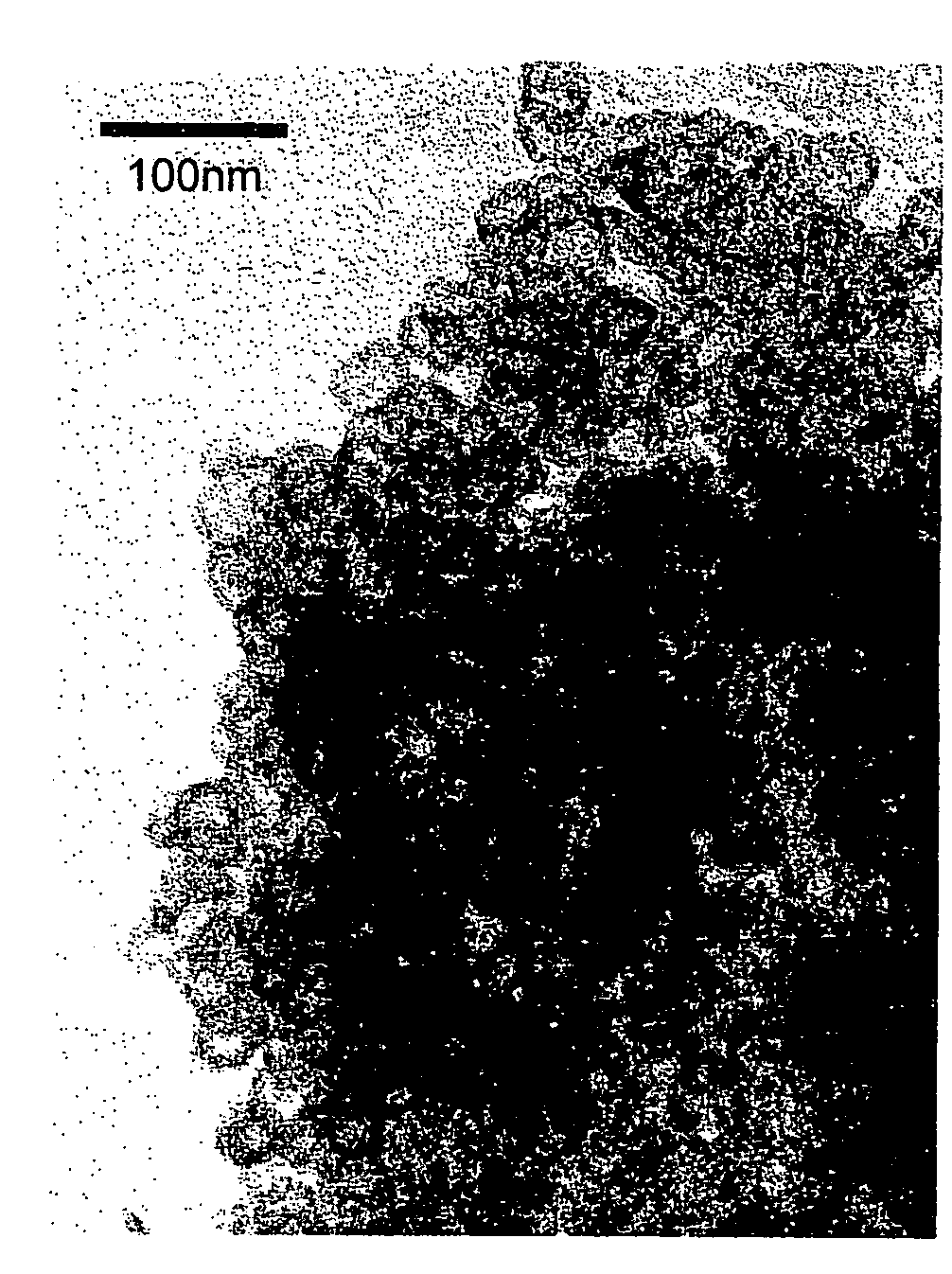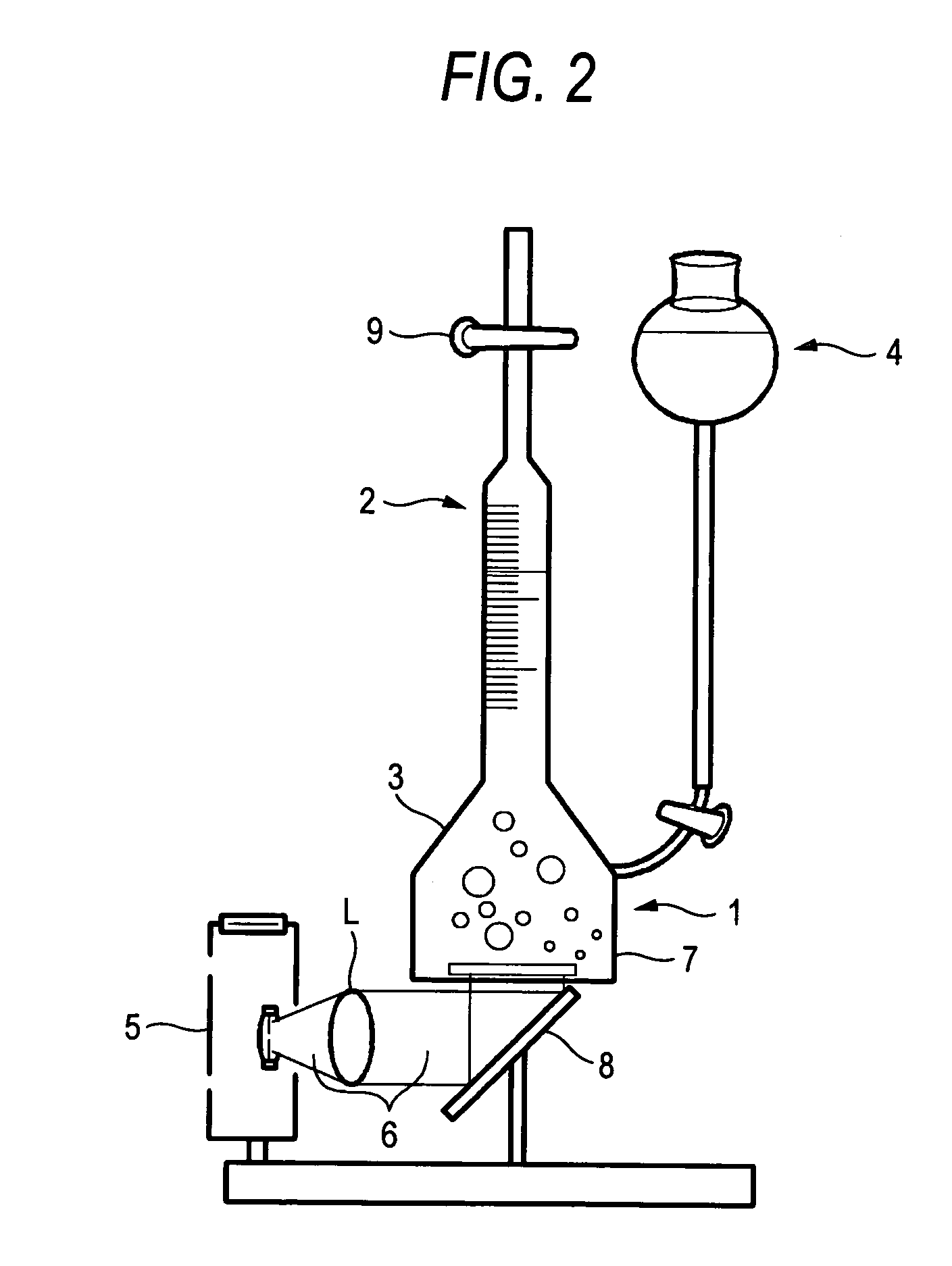Highly active photocatalyst and process for producing the same
a photocatalyst and high-active technology, applied in the direction of catalyst activation/preparation, metal/metal-oxide/metal-hydroxide catalysts, energy input, etc., can solve the problems of insufficient separation of reaction sites or electrons and holes, process requires enormous energy, and cannot achieve satisfactory conversion efficiency in the visible range. , to achieve the effect of increasing the formation rate, facilitating the dissolution of cadmate ions, and increasing the formation ra
- Summary
- Abstract
- Description
- Claims
- Application Information
AI Technical Summary
Benefits of technology
Problems solved by technology
Method used
Image
Examples
example 1
(Process 1 for Producing a Photocatalyst)
[0090]4.0 g of sodium chloride were dissolved in 100 ml of a 0.1 M solution of sodium hydroxide (solution (1)). Solution (1) and 100 ml of a 0.01 M solution of cadmium nitrate were mixed and stirred at room temperature. As a result, there was obtained a suspension of cadmium hydroxide particles having a white color (solution (2)). 5 ml of a 0.1 M solution of sodium sulfide were mixed with solution (2). As a result, there was obtained a suspension of particles having an intermediate color between orange and brown (solution (3)). 10 ml of a 9.65×10−3M solution of hexachloroplatinic acid were added to solution (3), stirring was continued for two minutes (solution (4)) and it was irradiated with ultraviolet light for five minutes by using a mercury lamp type ultraviolet irradiating device (solution (5)).
[0091]Solution (5) was filtered under suction by using a membrane filter having a diameter of 47 mm and a pore diameter of 0.2 um (6). The solid ...
example 2
(Process 2 for Producing a Photocatalyst)
[0093]Example 1 was repeated except using 100 ml of a 0.1 M solution of sodium sulfite instead of 100 ml of a 0.1 M solution of sodium hydroxide in solution (1) according to Process 1 for Producing a Photocatalyst (Example 1). Photocatalyst particles having a greenish brown color were obtained on the filter, weighed about 110 mg and had a particle diameter of 62 nm.
example 3
(Process 3 for Producing a Photocatalyst)
[0094]1 ml of a 0.1 M solution of sodium sulfide and 1 ml of a 1 M solution of sodium sulfite were mixed together (solution (1)). Solution (1) was diluted with deionized water until a total volume of 100 ml (solution (2)). 10 ml of a 0.05 M solution of cadmium nitrate were dropped into solution (2) at a dropping rate of 13.9 ml / min. and stirring was continued for two minutes. As a result, there was obtained a suspension of particles having an intermediate color between yellow and orange (solution (3)). 1.5 ml of a 9.65×10−3 M solution of hexachloroplatinic acid were added to solution (3) and stirring was continued for two minutes (solution (4)). Solution (4) was irradiated with ultraviolet light for two minutes by using a mercury lamp type ultraviolet irradiating device.
[0095]As a result, there was obtained a suspension of particles having an intermediate color between orange and brown (solution (5)). Solution (5) was filtered under suction b...
PUM
| Property | Measurement | Unit |
|---|---|---|
| particle diameter | aaaaa | aaaaa |
| particle diameter | aaaaa | aaaaa |
| wavelength | aaaaa | aaaaa |
Abstract
Description
Claims
Application Information
 Login to View More
Login to View More - R&D
- Intellectual Property
- Life Sciences
- Materials
- Tech Scout
- Unparalleled Data Quality
- Higher Quality Content
- 60% Fewer Hallucinations
Browse by: Latest US Patents, China's latest patents, Technical Efficacy Thesaurus, Application Domain, Technology Topic, Popular Technical Reports.
© 2025 PatSnap. All rights reserved.Legal|Privacy policy|Modern Slavery Act Transparency Statement|Sitemap|About US| Contact US: help@patsnap.com



